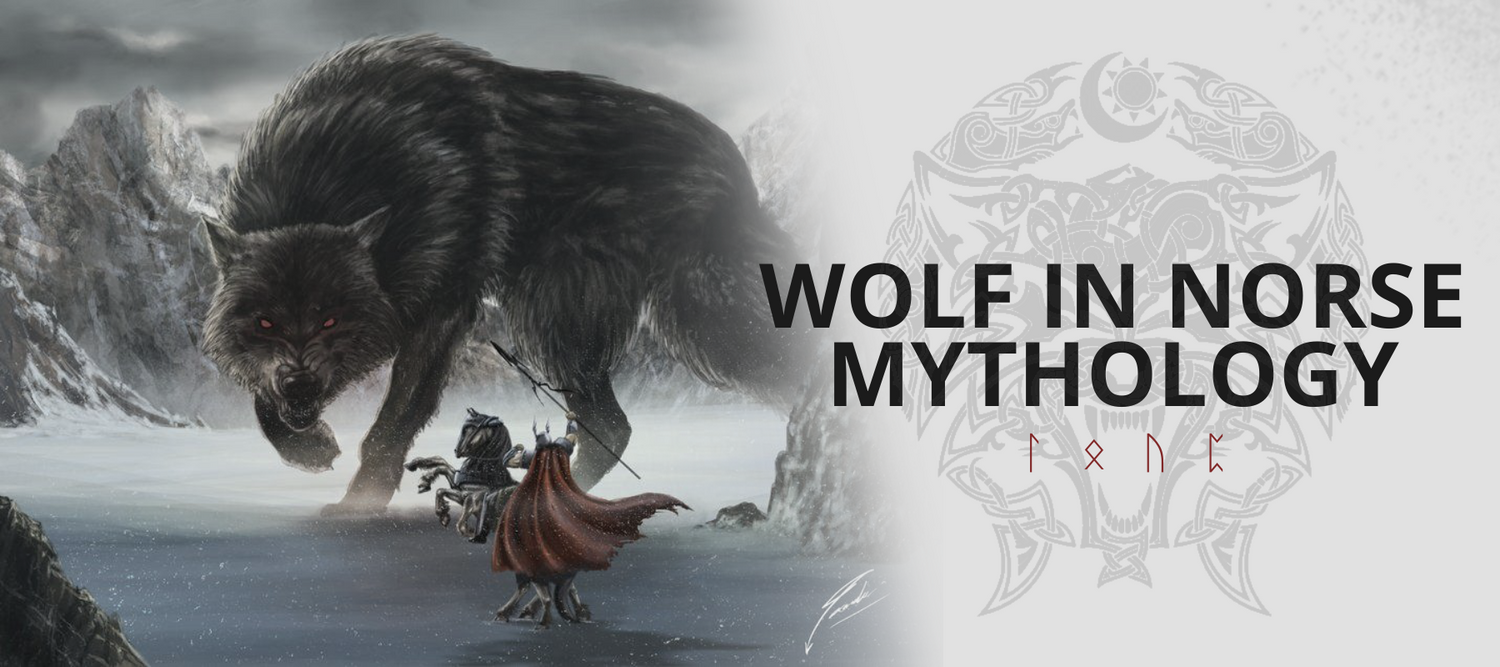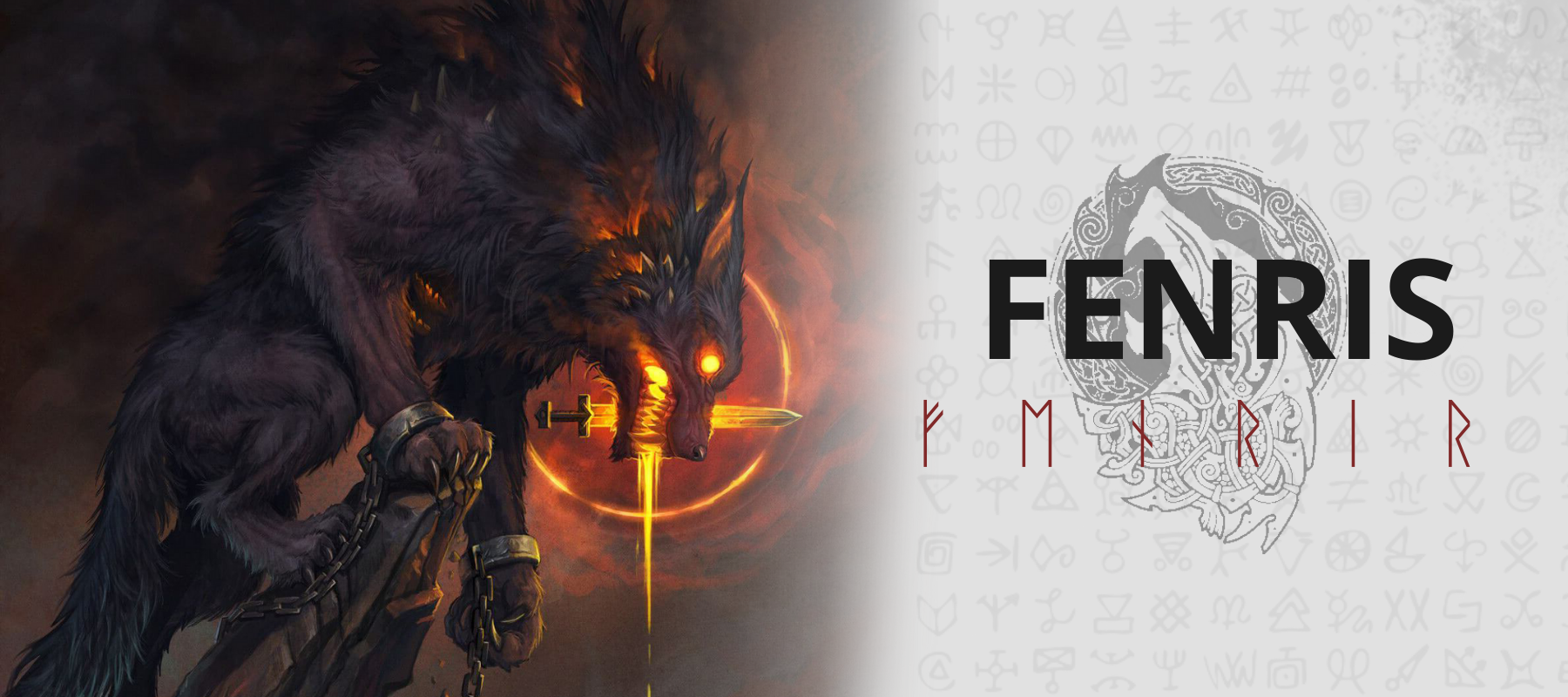Are you interested in the symbolism of wolves in Norse mythology? At Wolf Stuff, we are passionate about the representation of this emblematic animal that holds an important place in Viking beliefs. In this blog post we will discover the symbolism of the wolf as well as the mythical creatures of Nordic myths that illustrate these symbols.
WHAT DOES THE WOLF SYMBOLIZE IN NORSE MYTHOLOGY?
The wolf plays a fundamental role in Nordic culture, this is a main symbol in Norse mythology. Many lineages of warriors claimed to be descendants of a mythical wolf. It seems that among the continental Germans and the Nordic peoples, the wolf was mainly linked to warrior symbolism.
We know the two mythical wolves that accompany the God Odin. These two wolves are called Geri and Freki. They are an image of the destructive power of the god Odin and his absolute warrior power. He is the one who decides the fate of battles. But the symbolism of total destruction is truly represented by the famous Fenrir wolf, the cosmic wolf, son of Loki.
In northern mythology the wolf is a symbol of savagery and voracity, and more particularly an emblem of power and strength. During Viking age, warriors’ tribes wore wolf skin as symbol of their power, the ulfhednar ("warriors dressed in wolf skins") often associated with Berserk warriors. They worshipped the God Odin, and his two wolves Geri and Freki. Their warlike trances and fighting tactics reflected those of the wolf's ardor in battle. On the battlefield, they were half man, half wolf.
The wolf was also linked to the symbolism of the devourer in the image of his jaw, the archetype of life and death, day and night, as the mouth devoured and rejected.
In Norse myths, the mythical wolves were called "Vargs" which refers to a monstrous wolf, in reference to Fenris the giant wolf. There is also the wolves species of "Managarm", which refers to Hati and Skoll, descendants of Fenris wolf, born of his union with the giant Larnvidia residing in the Larnvid Iron Forest east of Midgard.
Thus, among the Germanic and Nordic myths, wolves were the devourers of stars and the giant with the features of wolf, Fenrir, was the fiercest opponent of the gods. Only the fearsome magic of the dwarves could stop his destructive ride with an incredibly strong ribbon with which the gods succeeded in tying him by cunning, but the god Tyre lost a hand.

WOLF NAMES IN NORSE MYTHOLOGY
As we've seen, wolves play a prominent role in northern culture. Here are the names of the main wolves in Norse mythology:
FENRIS, THE GIANT WOLF
Fenrir, the giant wolf in norse mythology is the son of the devious god Loki and the giant Angerbode. The Aesir prophesied that Fenrir would destroy the world and brings the twilight of the gods with the giants and the serpent Iormungandr. Frightened by the size of the Wolf and the destructive prophecy of chaos, the Norse pantheon of Viking gods decided to tie the beast with a very strong bond called Lœding.
But, during the Ragnarök, the fierce wolf will break his bonds forged by dwarf, swallow the Sun and run away, one jaw scraping the ground and the other tearing the sky.
Odin drew his last breath in a final battle against the bloodthirsty beast. But the heroic Vidar, his sons, easily inflicted a mortal blow to the supreme Wolf, Fenrir, who had no reason to exist after defeating his enemy, Odin.

SKÖLL AND HATI: STAR DEVOURERS
Among the ancient Scandinavians, the wolf was a figure of the night, unknown and feared. He was the instrument or enemy of the deities. Sköll, which its name means "Betrayal" or "Noisy", chased the Sun to the horizon and Hati "Hate" the Moon he preceded.
Sköll and Hati were the sons of Hródvitnir, the giant wolf Fenrir in old Norse language, and the giant Iarnvida of the Iron Forest Iarnvid. When these two wolves of the Managarm breed "Dogs of the Moon" seize their prey, the Ragnarok will begin. Sköll and Hati were the two sons of the giant wolf, and embodied the mouth of the animal devouring its prey.

GERI AND FREKI: WOLVES OF ODIN
As for Geri "The Hungry" and Freki "The Voracious", these two creatures were the two wolves of the supreme god Odin, personifying the principle of destruction, as opposed to the two ravens of the one-eyed god Odin symbolizing the creative principle.
They were fed by their divine master at the banquet of Walhalla where the god gave them his food, creating a parallel with the wolf's mouth relating to Ragnarok, when the giant wolf Fenrir devoured Odin before being killed by the god Vidar, son of the one-eyed god.
TO SUM UP...
Since time immemorial, the wolf has accompanied human beings in their dreams of greatness and in their deepest fears. Through these wolf tales, Norse myth teaches us important lessons. Considered an omen of destruction, war and death, and even the very embodiment of evil in some cultures, the wolf can become a true guide and master.
Considered as a symbol in Viking and Celtic mythology and legends, their beauty, howling and grace challenge our primary senses and open our hearts to appreciate the majestic nature of this remarkable animal.
If you like Norse mythology and wolves, discover our amazing wolf viking ring or discover the incredible power of Fenrir.



